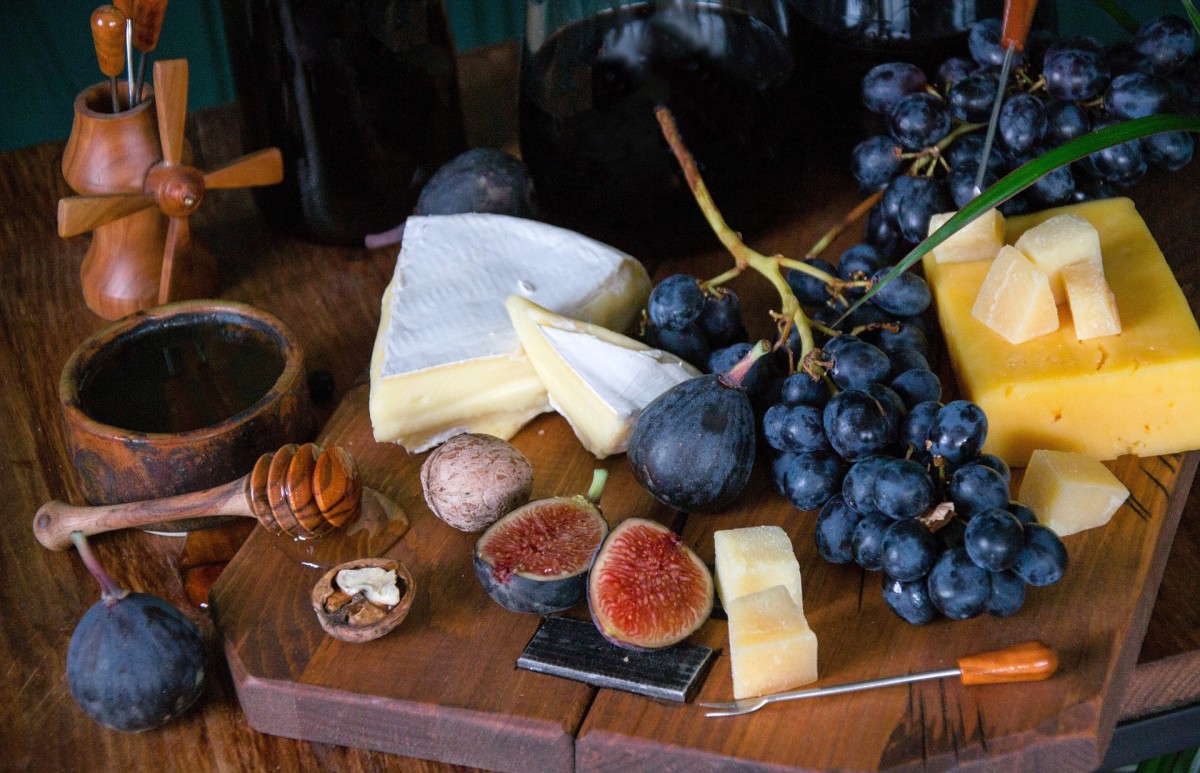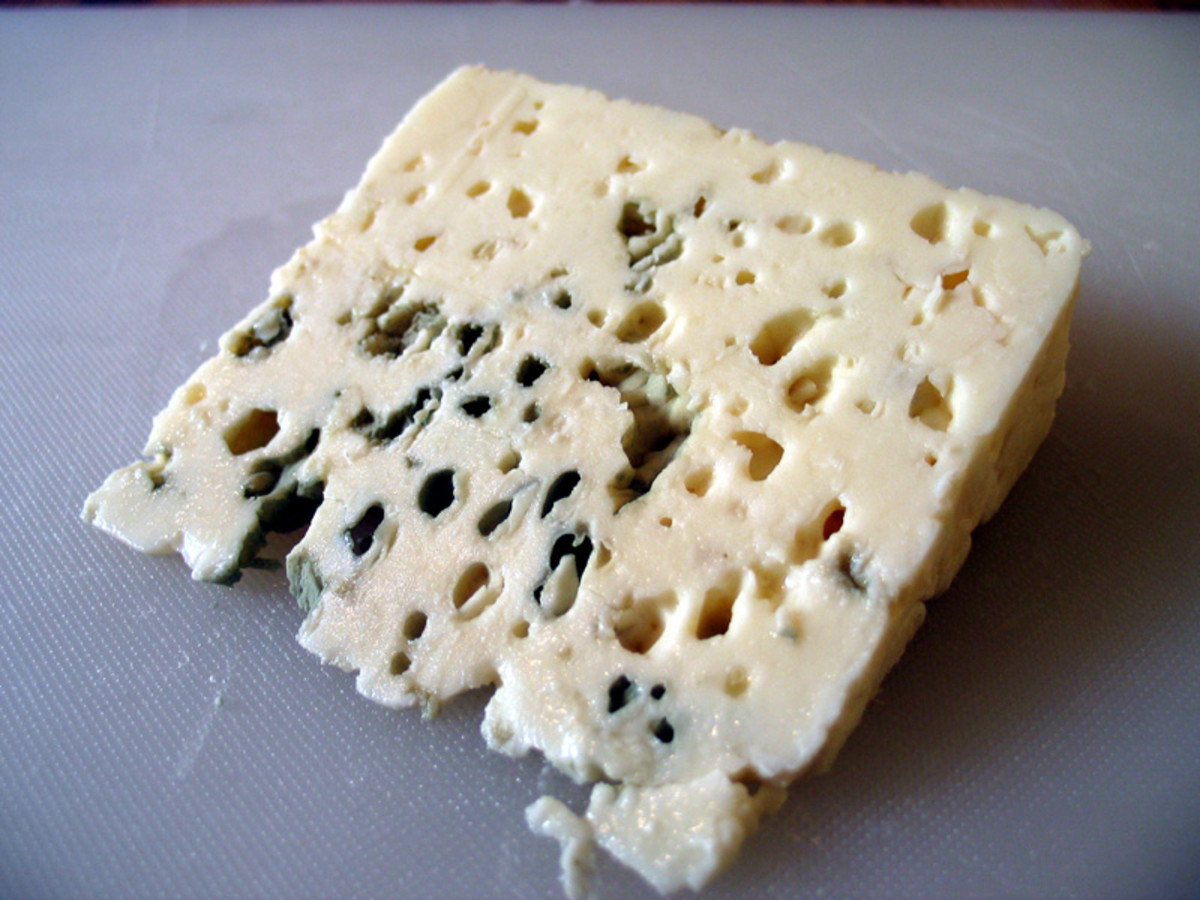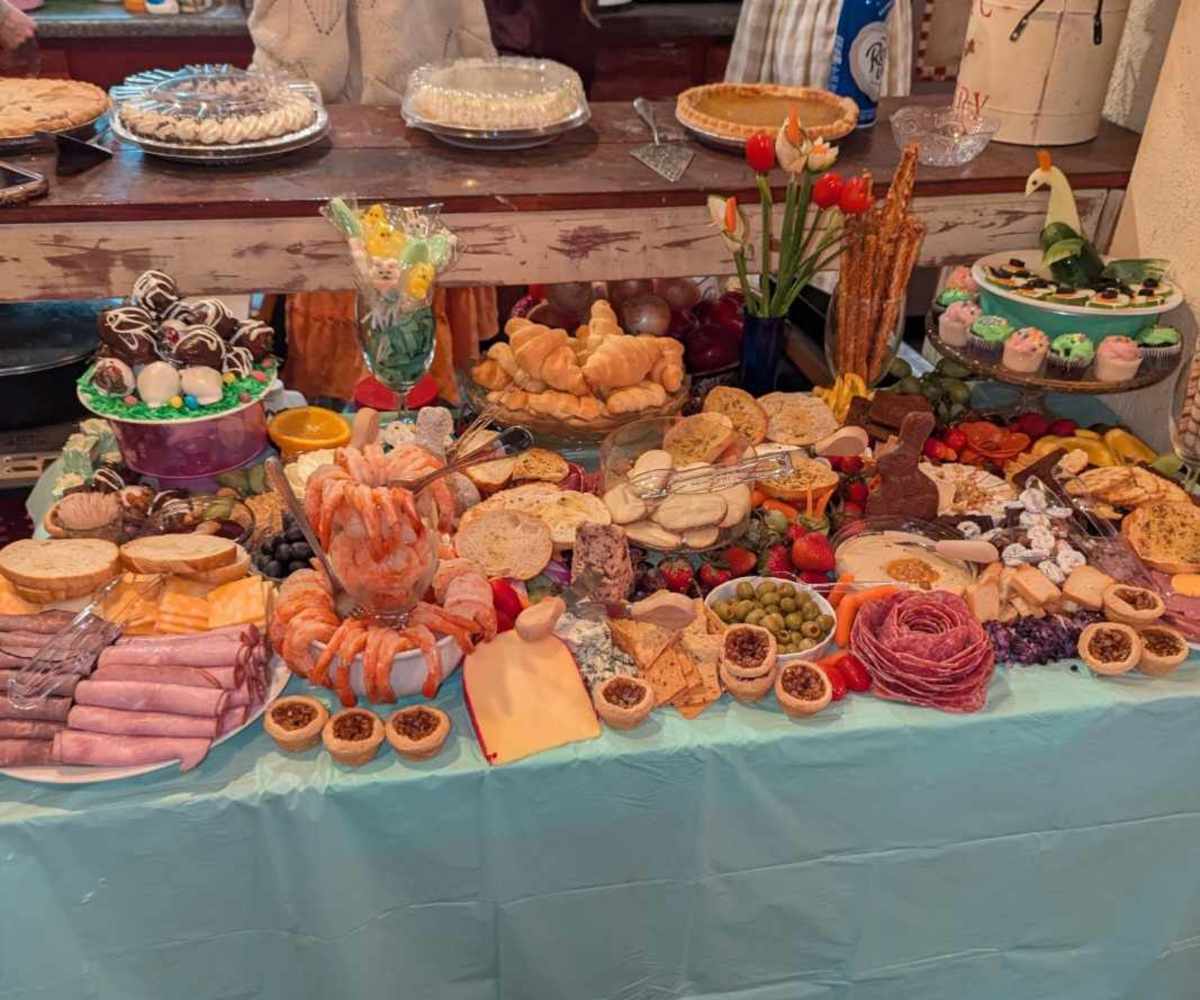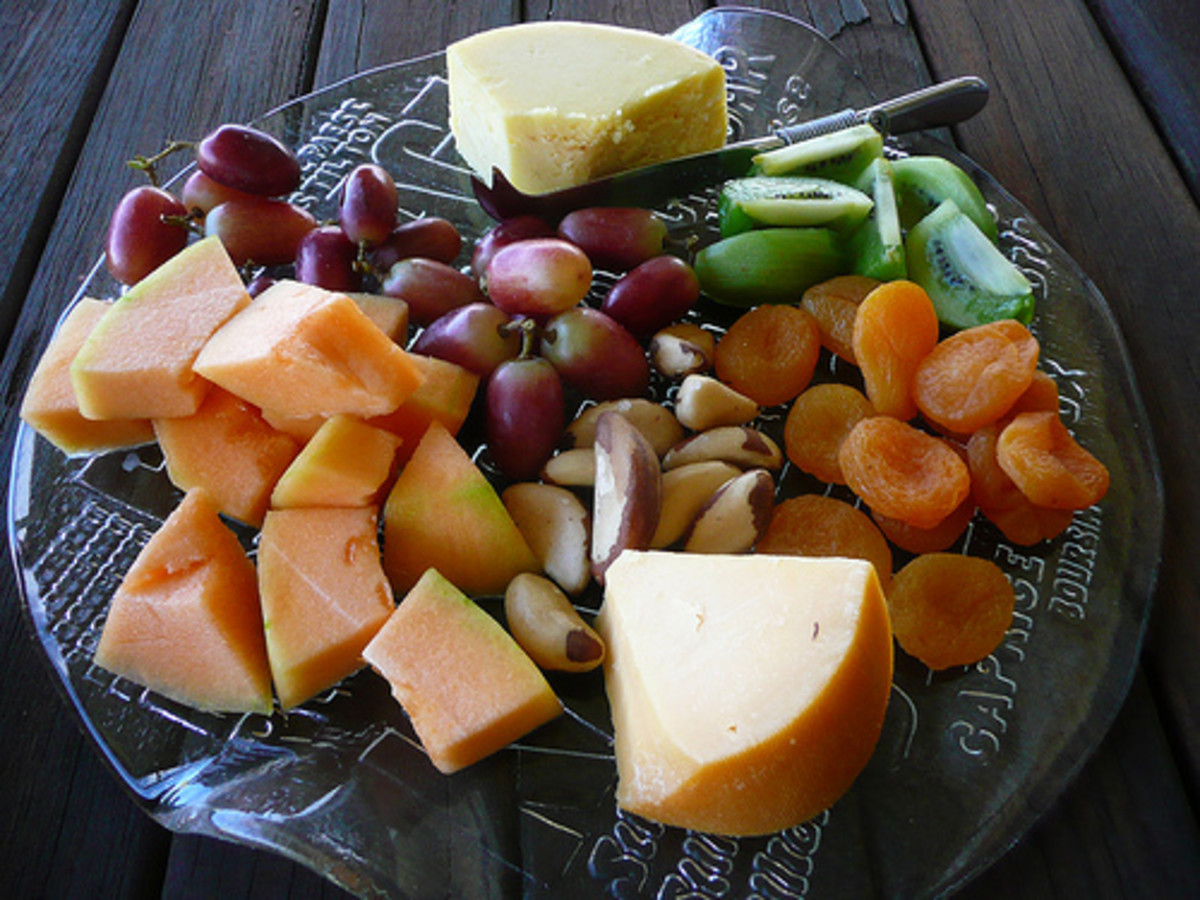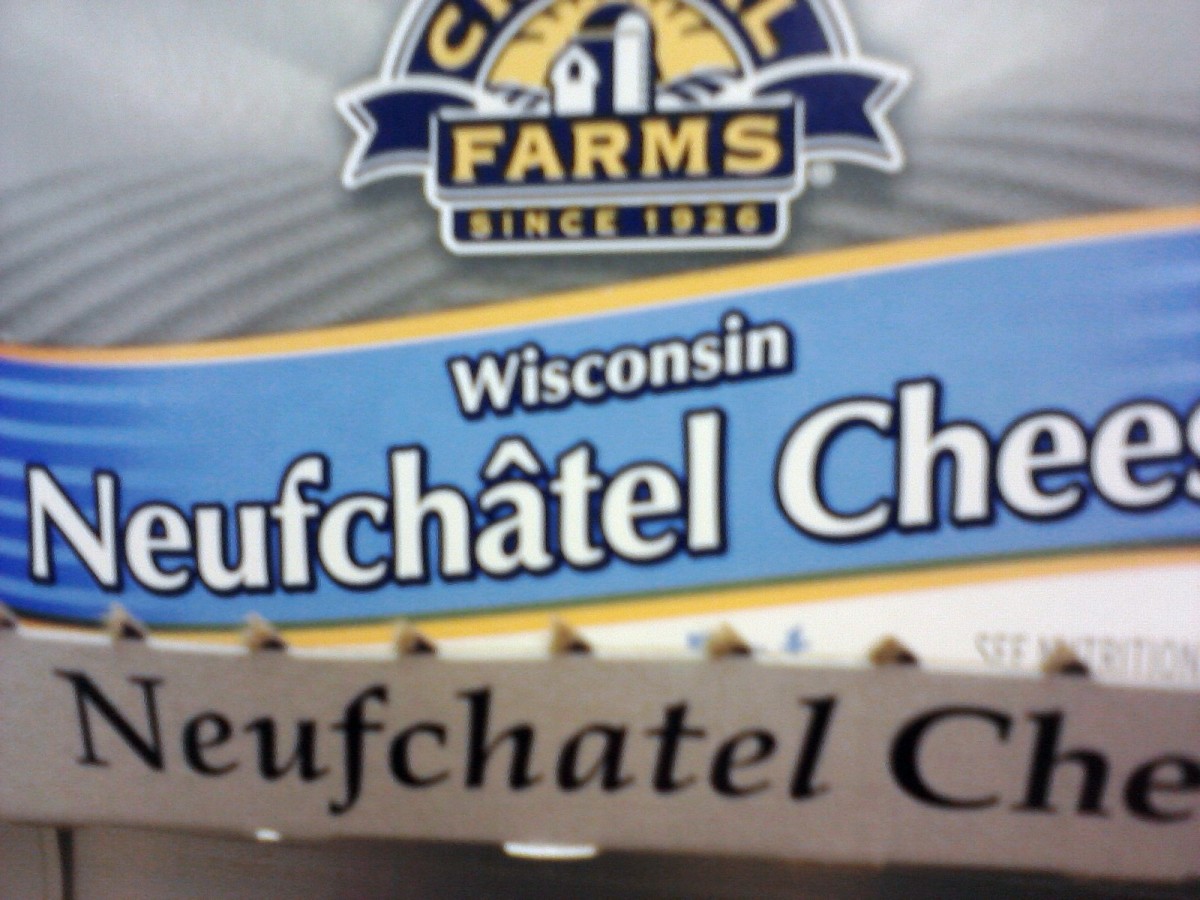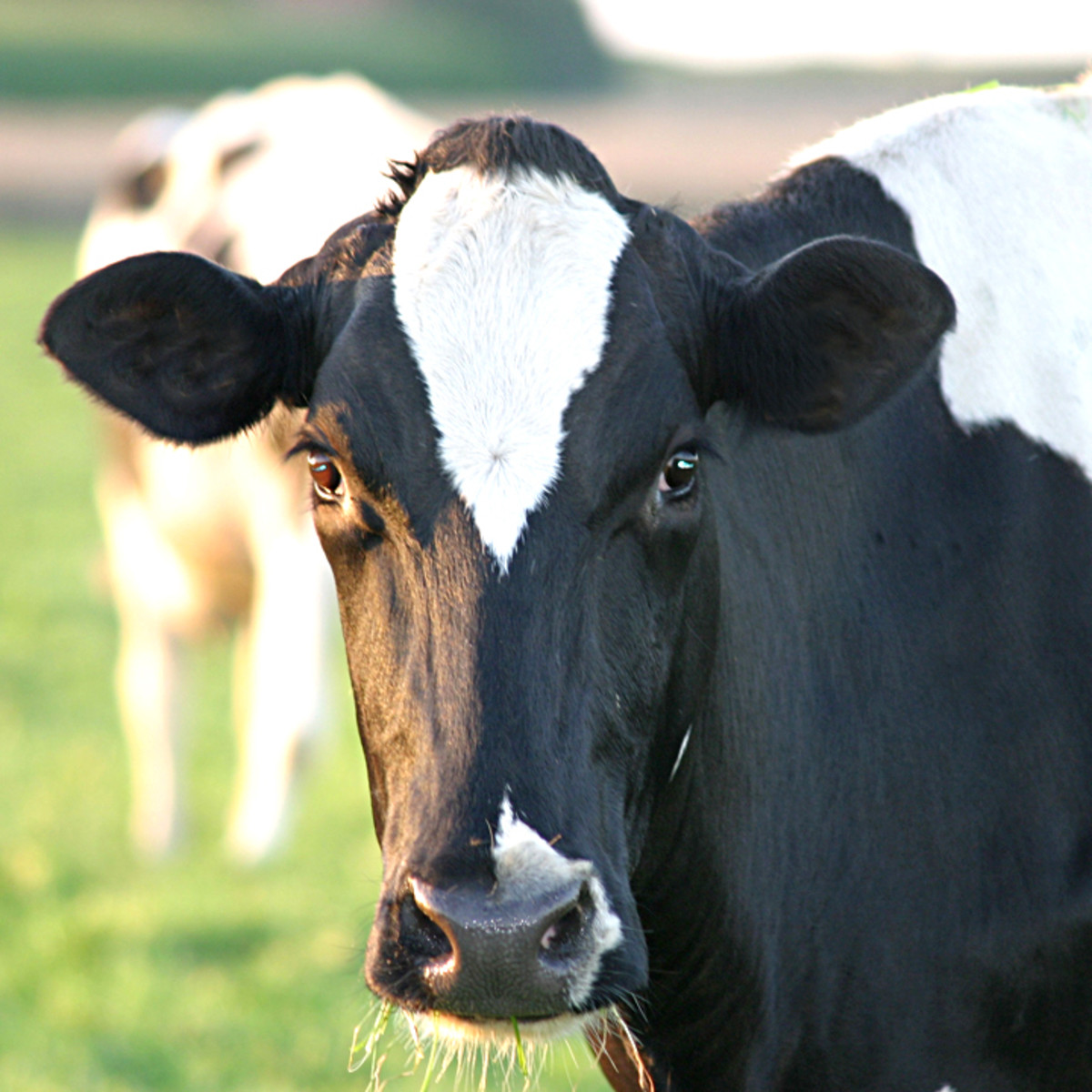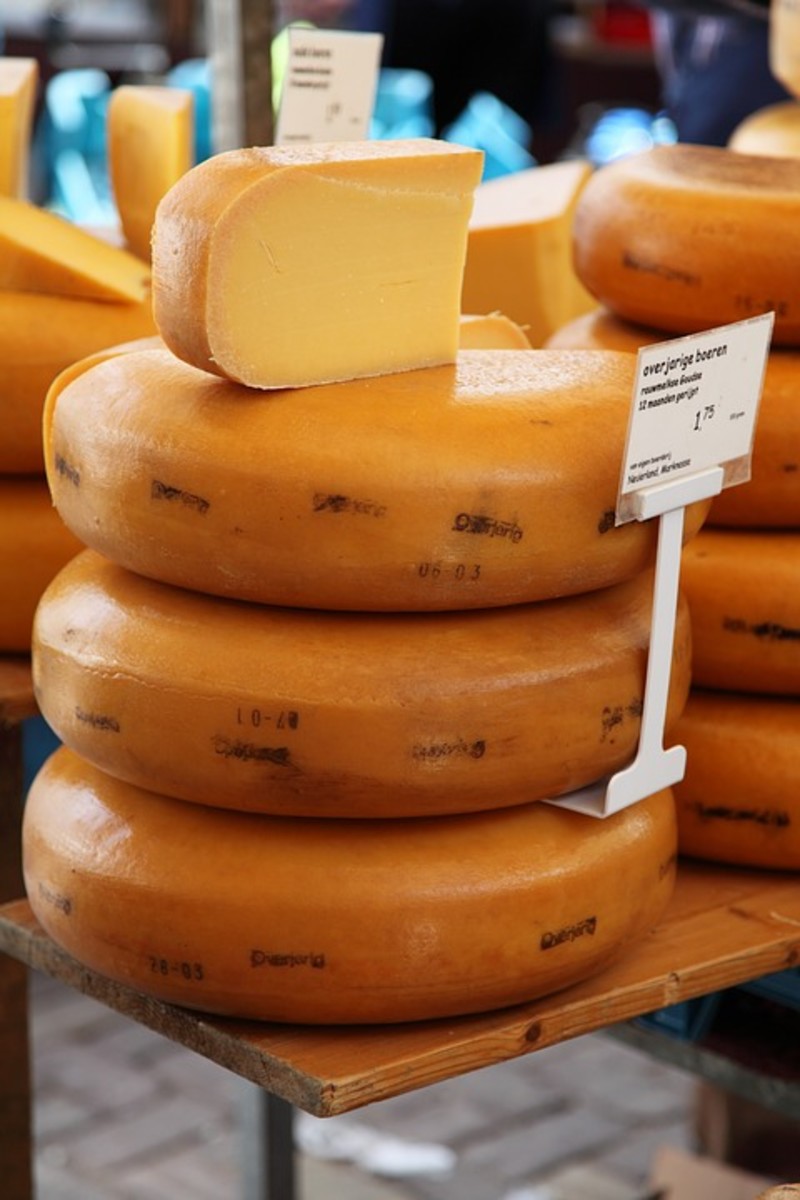The Perfect Cheese Plate
Chese plate
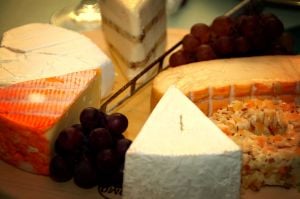
If you're planning a party, there's no better way to make a great impression on your guests than with a cheese plate. A well-chosen and balanced cheese plate can be a very intense and memorable experience. Depending on your guests, chances are good that you'll be able to introduce a few cheeses into the mix that no one has had the occasion to sample before, as well as taking the opportunity to provide some first-class examples of some old favorites.
The process of developing a cheese plate, however, is not so simple as one might suppose. It's very easy to choose cheeses that, while great on their own, might clash unfavorably on the palette, or if cheeses are sampled in the wrong order, it might make an otherwise subtly brilliant cheese simply seem bland and tasteless. Relax though; you don't need to be a cheese expert to assemble a great cheese plate, you just have to be willing to do a little research and develop a plan before you set out to the store. We've compiled a few pointers to get you going in the right direction.
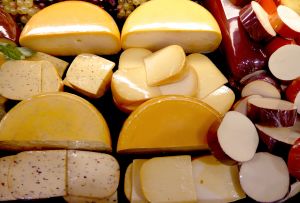
Cheese Plate Themes
The first step is to decide upon some kind of theme that ties your cheese plate together. Having a theme not only makes the selection process a lot easier for you, but it also gives the experience a foundation and thus makes it more interesting for your guests. They'll feel more confident about what they're tasting if they know ahead of time what they're looking out for. That said, there's hundreds of possibilities that you might choose from. You could have a sampling of cheeses that all come from a like kind, whether it's all hard cheeses, all blue, all rind cheeses, all from the same kind of milk, or even all from a particular cheese maker or a certain country.
Another approach is to dissolve the idea of a theme a little bit and make the theme “variety” itself. That is to say, pick a few categories of cheese and select one prime candidate to represent each. This can make for a very effective cheese plate, but remember to present the theme to your guests so that they can focus on the right things when tasting – if the cheese plate is being served as a course, you might use it as an opportunity to address the whole table and tell them what to expect, or if it's being served as an hors d'oeuvre, you could place a simple placard on the table next to the cheese plate that indicates the idea behind the selection. If you find yourself totally unable to come up with an appealing idea, feel free to ask for advice from the salesperson at your local cheese shop.
Buying cheese
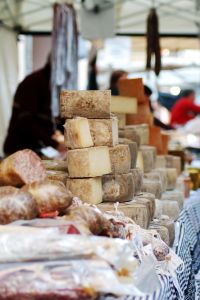
Cheese Buying
Speaking of which, you do have a local cheese shop, don't you? While the selection at your local supermarket might suffice just fine for everyday consumption, a good cheese plate should be a memorable experience. As such, you're going to want to seek out the best (or at least the most interesting) from each type you select, and that means visiting a dedicated cheese shop, where you can expect to pay anywhere from $10 - $30 a pound for a good cheese. Not all cheese shops are created equal, though. There are a few things to keep in mind when choosing one.
First, ignore the smell. Really, that pungent aroma is perfectly normal. If you're new to the world of cheese, the smell of a cheese shop is likely to confuse or even overpower you. As you become more experienced though, you'll be able to pick out individual scents from the air and make sense of it all. You might even develop a nose capable of knowing when a new cheese has come into stock before the salesperson even has a chance to tell you. What could be a better party trick than that? At any rate, a good cheese shop will nearly always let you taste cheeses before you buy them, and they'll have proper storage as well. Expect to see a lot of wheel cheeses wrapped in wax paper or cloth, and a moderate temperature controlled atmosphere.
If you don't see this kind of thing, or the salesperson doesn't seem very knowledgeable, or you simply don't like the vibe of the place (after you've gotten past the smell, of course), consider looking for another shop to suit your needs. Of course, if you live in a smaller town, you might not have such a luxury as choosing between multiple cheese shops. If this is the case, consider using the internet to order some samples to identify what you like, and then try to find local sources for that cheese.
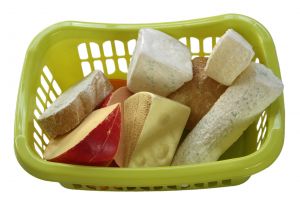
How Many Cheeses?
Once you know where you're going to be buying your cheese, it's time to decide just how many cheeses you want to serve. This answer should depend on how exactly you're implementing your cheese plate into the party. Will it be a course on its own, or a simple hors d'oeuvre?
- If you're serving your cheese plate as an appetizer course or self-serve style, you'll need around two to three ounces of each type of cheese you choose to serve since your guests will (hopefully) be hungrier when they arrive than when they leave!
- By contrast, a cheese plate served as dessert need only provide one ounce or so of each cheese to be satisfactory.
Based on this information, it should be fairly easy to determine the number of cheeses you want to serve, or will fit in your budget. One thing you might want to keep in mind is that many experts on the subject agree that an arrangement with an odd number of elements tends to be more visually appealing than an even number. This means that a plate containing an odd number of cheeses will lend itself to more creative presentation opportunities and in general create an appealing impression.
Cheese plate
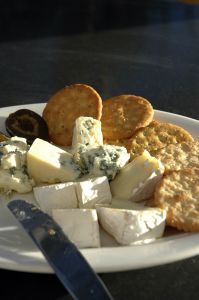
Cheese Arranging
After you've selected your cheeses, you'll want to know how to arrange them. A general rule here is to go from the mildest to the strongest. The reason for this is that stronger cheeses tend to produce a stronger aftertaste that will taint the palette and prevent a pure tasting of any milder cheeses that you might eat afterwards.
- Typically, the mildest cheeses are those classified as “soft” cheeses, such as the rich, creamy brie or buttery camembert. Greek feta and German handkase also fall into this category.
- Next come the “semi-soft” cheeses such as gouda, creamy havarti, jack cheeses (including muenster) and mozzerella.
- After that, the flavors get more intense with “hard” cheeses like cheddar, emmental (frequently called swiss), the delectable gruyere, and “grating” cheeses like parmesan and romano.
- Beyond even these, the most intense flavors to be found on a cheese plate will be the “bleu” cheeses and “rind” cheeses. “Bleu” cheeses are readily identifiable by the blue or green veins of mold that streak throughout their body. Some of the more prominent examples of a bleu cheese include bleu d'Auvergne, gorgonzola and roquefort (which is made from sheep's milk). “Rind” cheeses are often called the “stinky” cheeses for the reason that during their ripening, they are given a wash that promotes the growth of bacteria and gives the finished cheese a thick rind that can either be delightful or too pungent to eat, depending on the person. Obviously, they should be placed last if included in your cheese plate.
Choose Cheese Accompaniments
Having assembled and arranged your cheese plate, it's time to choose some accompaniments to really enhance the experience. There are many foods that can actually intensify the innate flavor of cheeses or change them all together. Generally, it's a good idea to serve a broad range of nuts and fruits like sliced apples or pears, as well as an interesting assortment of bread and toast for the spreadable cheeses on your plate. Many people recommend onions, sliced thin, as an accompaniment to the stronger cheeses, but this can be a matter of personal preference.
A little seen but potentially very interesting and memorable addition is a dab of natural honey for consumption with the soft and semi-soft cheeses. Choosing a wine to accompany your cheese plate can be a little daunting, especially if you have a huge range of flavors represented but in general just keep in mind that you want a wine for accompaniment, not to overwhelm the cheeses themselves. Strong bleu and rind cheeses can support sweet dessert wines like port and zinfandel, whereas you might even need something strong like pinot noir to counteract the pungency of a strong rind cheese. By contrast, the more subtle soft cheeses should be paired with something lighter and with less body and tannin like Beaujolais.
In the end, remember that a cheese plate is intended to be an interesting and memorable experience. Keep them in mind so that you can maximize your enjoyment of the event, but don't let these guidelines overwhelm or discourage you. In the end, so long as you enjoy the cheeses you've selected and maybe learn a little something at the same time, you should consider your cheese plate a success.
This hub brought to you...
by Julie-Ann Amos, professional writer, and owner of international writing agency www.ExquisiteWriting.com
Why not create your own HubPages? It's fun and you can make revenue from Adsense and other revenue streams on your pages. JOIN HUBPAGES NOW - SIMPLY CLICK HERE...
This work is licenced under the Creative Commons Attribution-Non-Commercial-No Derivative Works 3.0 Unported License. To view a copy of this licence, visit http://creativecommons.org/licenses/by-nc-nd/3.0/ or send a letter to CreativeCommons, 171 Second Street, Suite 300, San Francisco, California94105, USA.


